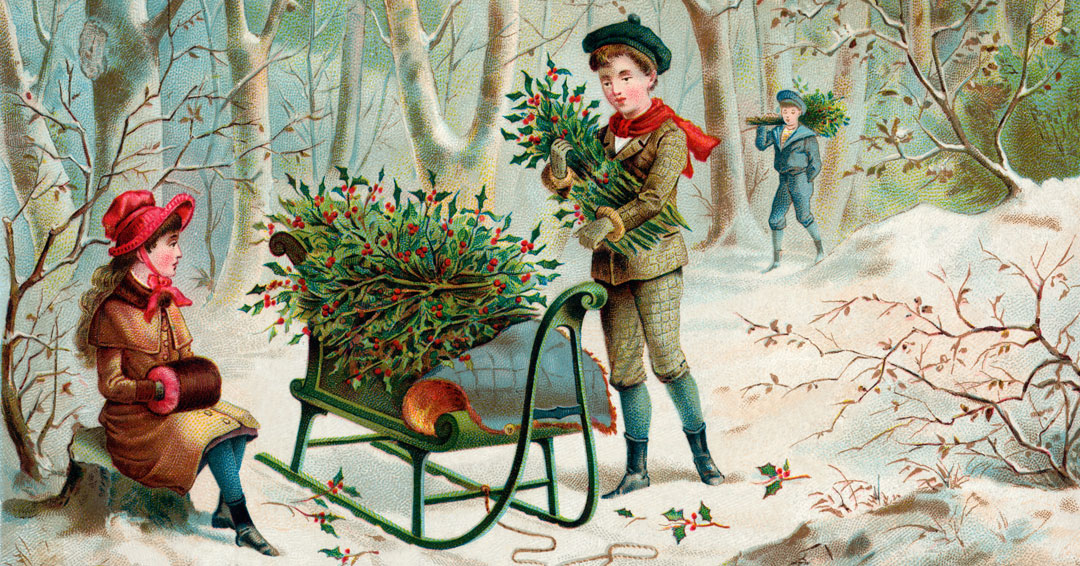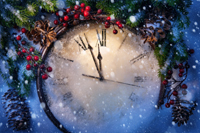 New Year’s Eve
New Year’s Eve
Many New Year’s traditions date back to ancient times, and were observed during the 1860s in much the same way as they are today. The stroke-of-midnight toast, noisemakers and fireworks, even the making and breaking of New Year’s resolutions– all were familiar and well-established back then.
Other traditions came into usage more recently. Auld Lang Syne was a poem written by Scotsman Robert Burns in 1788, only some 70 years before the Civil War. However, the poet stated that he “…took it down from an old man,” and the music to which it is most often sung is an old traditional ballad, so Scots immigrants may have encountered something similar at an earlier point in history.
Some customs, however, came about as a direct result of the Civil War itself. In many parts of the South, black eyed peas are eaten with some ceremony right after midnight or first thing on New Year’s Day. Originally planted as food for livestock, this member of the bean family was ignored by Sherman’s troups as they burned their way from Atlanta to Savannah. Sparing of the black-eyed-pea crop meant the difference between starvation and survival for many Southern families, and is commemorated to this day.
 Valentine’s Day
Valentine’s Day
Victorian Valentines are a charming reminder of the sentimental side of 1860s life, and the celebration of the day was well established by the time of the Civil War. Valentine’s Day was first dedicated to romantic love in Chaucer’s time, was mentioned in Shakespeare’s Hamlet, and had become a widespread holiday in England by the 1700s.
The custom of sending flowers, candy, cards and romantic gifts dates to the same period. However, during Victorian times, handmade Valentines gradually gave way to the printed variety.
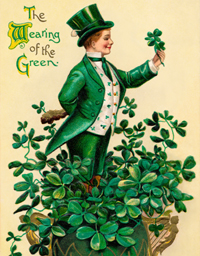 St. Patrick’s Day
St. Patrick’s Day
The celebration of St. Patrick’s Day was imported to the United States with the mass influx of Irish immigrants following the Irish potato famine in 1845-1852.
St. Patrick is the patron saint of Ireland and in very early times was associated with the color blue. By 1681, however, green had been adopted as his color, along with the iconic shamrock.
The largest St. Patrick’s Day Parade in the world is held annually in New York City, and there has been a St. Patrick’s Day Parade in San Francisco since 1852.
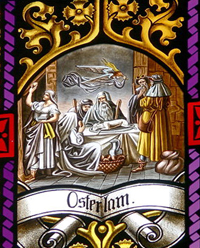 Passover
Passover
Even in the midst of the Civil War, Jewish soldiers found ways to celebrate Passover, finding substitutes for traditional elements where they had to.
For example, the 23rd Ohio Volunteer Regiment had some twenty celebrants in 1862. One of these reported that cider was used in place of the wine, an unnamed bitter weed in lieu of horseradish, and an actual brick in place of the charoses (itself a stand-in supposed to represent brick mortar in the ceremony).
 Easter
Easter
Easter traditions such as decorating, hiding, and hunting for eggs, have come down through the centuries with little change. They were observed during Civil War times in much the same way as they are now.
The idea of an “Easter Bunny” who brought colored eggs to children appears to have derived from an older Germanic tradition, possibly linked to a pagan goddess named Ēostre or Ostara. It was brought to the U.S. by Pennsylvania Dutch immigrants.
And chocolate bunnies? Again, a Germanic invention, originally just molded sugar treats.
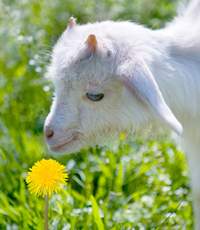 April Fool’s Day
April Fool’s Day
Nonsense and practical jokes have been a staple of this day since earliest times. Chaucer makes a casual reference to it, and the Roman festival “Hilaria” (from which we get “hilarious”) occurred on March 25. As far back as 1683, the tradition of practical jokes was so ingrained that there are reports of treaties being backdated to avoid an April 1 signature.
In Italy, France and Belgium, a traditional prank is to attach a paper fish to someone’s back, a kind of pictorial “kick me” sign. During Civil War times Harper’s Weekly reported that a version of this stunt, namely fastening long rag-tails to the hem of ladies’ dresses, was much in vogue. Harper’s also reported that upon occasion people would take umbrage at pranks, with “pistols and coffee for two” the not unfrequent denouement.
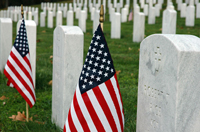 Memorial Day
Memorial Day
Memorial Day was originally called ‘Decoration Day’, and began during the Civil War in both the North and South as a day to honor fallen soldiers. In 1862 the women of Savannah, Georgia decorated soldier’s graves, while the 1863 ceremony at Gettysburg dedicating the cemetary there is the best known early commemoration in the North.
On May 5, 1868, General John A. Logan issued a proclamation that “Decoration Day” should be a nationwide, annual observance, and it was officially held on May 30 of that year at Arlington National Cemetary. The Southern states had already established a Confederate Memorial Day in 1866.
Memorial Day became an official national holiday in 1971; it had been moved to the last Monday in May from its traditional May 30th observance.
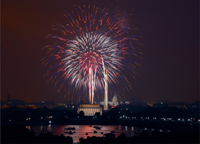 Fourth of July
Fourth of July
Independence Day has been celebrated with fireworks, picnics, and parades since the earliest days of the nation. Bonfires the night before were also part of the observance throughout the 19th century, although the practice has largely died out since.
During the Civil War and for quite some time after, the song “Hail Columbia” served as the unofficial national anthem and was played frequently during Independence Day ceremonies. Today it is used as the entrance march for the Vice President of the United States. “The Star Spangled Banner” was written in 1814, but not adopted as the official national anthem until 1931.
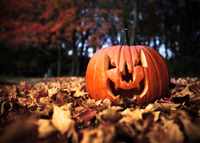 Halloween
Halloween
By Civil War times, Halloween had started to evolve into a light-hearted party occasion from the primarily religious holiday it had been up to that time. Initially it was largely celebrated by Irish and Scottish immigrants, and little mention of the holiday was made in the public press until the early 1870s.
The telling of ghost stories and practice of fortune-telling came to the U.S. with the Puritans, who brought Guy Fawkes Day as well. Masked revelers would go from house to house demanding cakes and beer, or begging lumps of coal to burn effigies of Guy Fawkes. The term ‘trick or treat!’ did not, however, come into common usage until the 1930s.
Jack-o-lanterns have been around since the 1660s, but the use of pumpkins for these decorations is a uniquely American tradition. In Scotland and Ireland they used turnips or potatoes to create them, while in England they used beets.
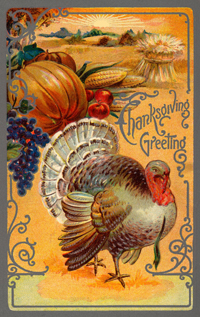 Thanksgiving
Thanksgiving
Days of Thanksgiving had been declared sporatically throughout the history of the United States, but Thanksgiving became a regular annual national holiday in 1863. President Abraham Lincoln decreed a national day of thanksgiving to be celebrated on Thursday, November 26, 1863.
Traditional turkey, cranberries, corn and pumpkin pie have been part of the celebration since the earliest days of the Republic, and most are native to the Americas. However, turkey may well have been familiar to the Pilgrims already; the Spaniards brought the bird to Europe in the 1600s.
 Christmas
Christmas
Christmas holiday celebrations fell out of favor in America after the Revolution, being seen as a British (and hence unpatriotic) custom. However, When Charles Dickens published “A Christmas Carol” in 1843 the holiday was re-cast as a family event rather than a community- or religious-based observance, and its popularity revived.
Holiday decorations had always included greenery (from the 1400s in England). The German custom of an evergreen tree brought into the house was adopted in England in the 1830s, and by 1870 had become part of the American tradition as well. Tinsel, originally developed as extruded silver strips in the 1600s, was used to trim the tree, and the first commercial tree decorations were produced in Germany in the 1860s.
Traditional Christmas carols such as “Oh Come All Ye Faithful”, “The First Noel”, “Deck the Halls”, and “Hark the Herald Angels Sing” had been part of the holiday repertoire since the mid-1700s, and “Silent Night” was written in 1818. More songs were added during the Civil War period, including “It Came Upon a Midnight Clear” (1849) “Angels We Have Heard on High” (1862) and “Oh Little Town of Bethlehem” (1868). “Jingle Bells” (1857) was actually a Thanksgiving carol.
The most moving song written during this time was “I Heard the Bells on Christmas Day” (1863), a poem composed by Longfellow when his son enlisted in the Union Army without his blessing. Little-known fourth and fifth verses describe cannons thundering in the South and the rending of a continent’s hearthstones, both direct references to the ongoing Civil War.
(Posted April 2013)
